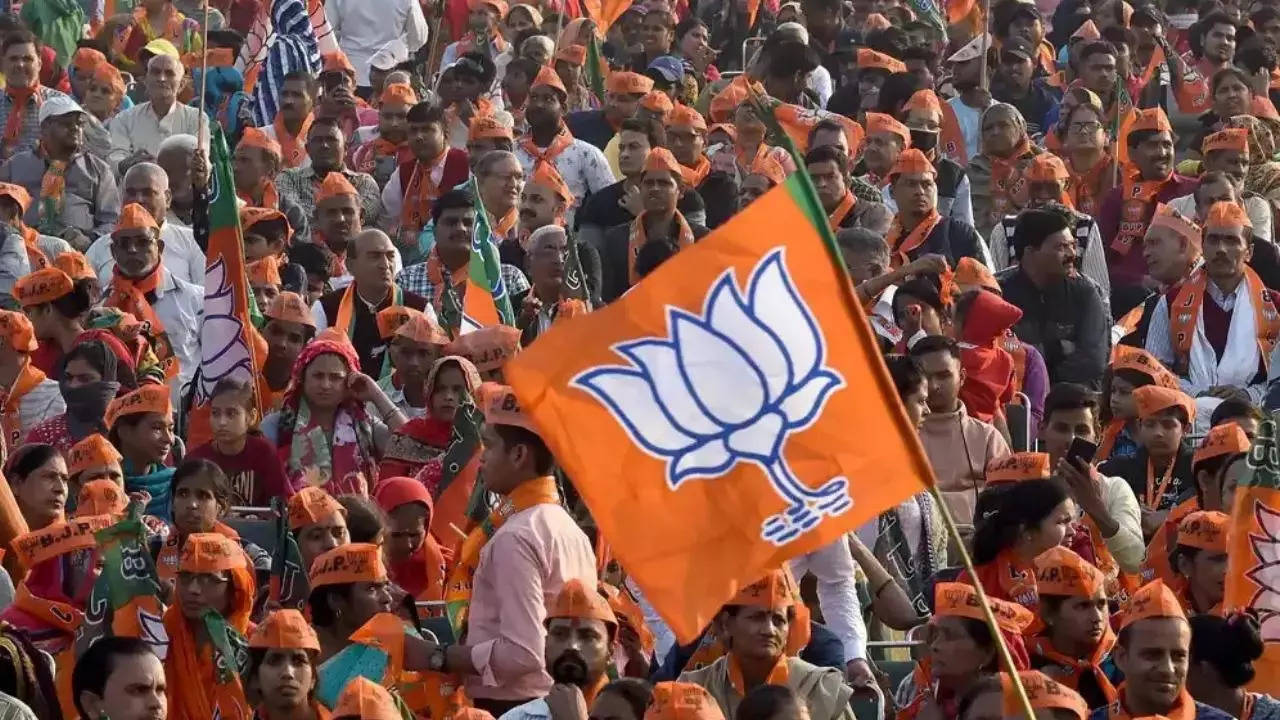What Helped BJP Defeat Congress In Madhya Pradesh Assembly Elections | 5 Points
Madhya Pradesh went to polls in a single-phase on November 17. The five-year tenure of the current Assembly will end on January 6, next year.

Here are some factors that helped the BJP defeat the Congress, contrary to most exit polls.
Bhopal: The Bharatiya Janata Party (BJP) is set to form government in Madhya Pradesh, the landlocked heartland of Central India, for the fifth time. According to latest trends, the saffron party has comfortably crossed the majority mark for the 230-member Assembly.
Here are some factors that helped the BJP defeat the Congress, contrary to most exit polls:
1. Welfare schemes
The Shivraj Singh Chouhan-led BJP government cash in on welfare schemes, particularly the Ladli Behna Yojna and Pradhan Mantri Kisan Samman Nidhi scheme.
In August, Chouhan increased the financial aid given to women in the ‘Ladli Behna’ scheme from Rs 1,000 to 1,250. This was done to woo women voters, as per political experts. Meanwhile, beneficiaries of the second scheme received Rs 10,000 each in their accounts this November.
2. PM Modi’s campaigns
Prime Minister Narendra Modi carried out 14 public rallies across Madhya Pradesh. The party’s campaign “Modi ke mann mein MP, MP ke mann mein Modi” fueled the voters’ trust and dented the Congress’ welfare promises.
The manifesto promised an Indian Premier League (IPL) team for the state, Rs 25 lakh health insurance cover, a caste-based survey, 27% reservation to Other Backward Classes (OBCs) in government jobs, and more.
3. Double-engine sarkar
The citizens were promised that the ruling party’s government at the Centre and in the state, which it calls the “double-engine sarkar”, would be able to perform better. This has already been the scenario for the voters for the past nine years.
To deliver the message better, the BJP fielded a mix of MPs and MLAs and aggressively campaigned with the help of senior central and state leaders, including Union Home Minister Amit Shah and BJP National President JP Nadda.
4. Congress’ infighting campaign
While the Congress campaigned heavily on social media, its presence was not so visible on ground. There was also a sense of distrust among party workers following the 2020 political crisis.
Furthermore, the party failed to properly convey much of its 1,200 manifesto promises. Meanwhile, the BJP began strategising for the elections before the dates were announced in October.
5. Jyotiraditya Scindia’s exit
Union Minister Jyotiraditya Scindia, who was at the centre of the political crisis in MP in 2020, is said to be a key factor for BJP’s win. This time, the party outperformed the Congress in Chambal-Gwalior region, which used to be a stronghold of the grand old party.
Scindia is a member of the royal family of Gwalior kingdom, which included the districts of Gwalior, Shivpuri, Datia, Ashoknagar, Guna, Morena, Bhind, and Sheopur.
Notably, the state went to polls in a single-phase on November 17. The five-year tenure of the current Assembly will end on January 6, next year.
End of Article
Subscribe to our daily Newsletter!
Videos





02:10
Raveena Tandon addresses CONTROVERSIAL statements regarding Khushi Kapoor and Agastya Nanda in The Archies

02:27
iQOO 12 5G | Glimpse of Exciting Leaks! | Funtouch OS Android 14, Qualcomm Snapdragon 8Gen3 & More

02:15
OnePlus 12 Design & Looks | OnePlus 12 Latest Updates | OnePlus 12 Colour Available | Gadget Times

03:53
Urfi Javed Flaunts her Topless Style | Jennifer Mistry's HEARTWARIMNG note for TMKOC

04:45
'World Used Kashmir Against India': What EAM Said On J&K's Art 370| Page From Times Now Archive














